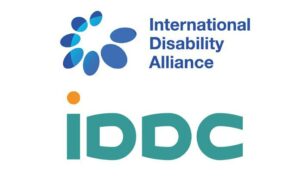
IDDC / IDA Joint Statement on COVID-19 in relation to the UNESCO GEM Report Launch
Tuesday 23 June 2020. This statement is being issued by the International Disability Alliance (IDA) and the International Disability and Development Consortium (IDCC) on the release of the UNESCO Global Education Monitoring (GEM) Report to highlight its important in the context of the COVID-19 pandemic.
IDA and IDCC would like to congratulate UNESCO on the report and welcomes the GEM Report’s recognition of inclusive education as the only way to achieve SDG 4 for all children, including learners with disabilities.
The report outlines the gap between the learning outcomes of learners with and without disabilities, and that those learners living in poverty, especially girls, are unlikely to complete their primary education.. A quarter of a billion learners were out of school including at least 32 million children with disabilities in low- and middle-income countries (Education Commission report 2016).
The GEM Report notes how COVID 19 has shone a light on the ways that education systems need to be responsive to all learners’ needs. IDA and IDDC fully support the fact that the GEM report acknowledges the effect COVID 19 has had on education systems worldwide, and flags the opportunity and urgency to take intentional and accelerated steps towards fully inclusive education systems in the wake of this pandemic.
Whilst many governments have ensured that digital and multi-media learning has been utilised to ensure distance education can continue, this has not been accessible to all learners. For example, the GEM reports highlights that accessibility in relation to reasonable accommodations has not been well considered, access to the internet is only at 12% on average in many low resources countries and not every family has a radio or TV. In order for the COVID-19 crisis to also provide opportunities for educational transformation, (e.g. accessibility to enable full participation) a twin track approach is required using the principles of universal design for learning is required. On one track, improvements in the whole education system are needed, and on the second track, these should be combined with specific responses and accommodations to support learners with different requirements to equalize their opportunities to access and benefit from inclusive education systems.
IDDC and IDA welcome the fact that the GEM report highlights the following key points in relation to COVID 19 and learners with disabilities:
- Before COVID-19 10 LMIC only 19% of children with disabilities achieved minimum proficiency in reading.
- Not enough attention has been paid to the inclusion of learners from marginalised groups, including boys and girls with disabilities in response to COVID-19, which risks widening the existing learning gap and more learners leaving school early.
- Covid-19 presents an opportunity to reimagine education, celebrate diversity and realise an inclusive education for all by building a resilient inclusive society
As mentioned in the GEM report, teachers can be taught to use flexible teaching methods and given flexible curricula through learning about the Universal Design for Learning principles in their approach to teaching – and we have seen innovative methods used in practice during the school closures. Across 10 francophone sub-Saharan African countries, only 8% of grade 2 and 6 teachers had received in-service training in inclusive education so there is a long way to go.
IDDC Inclusive Education Task Group
International Disability Alliance (IDA)
For more information, contact IDDC Inclusive Education Task Group coordinators: Julia McGeown (J.McGeown@hi.org), Sian Tesni (Sian.Tesni@cbm.org) or Priscille Geiser at the International Disability Alliance (pgeiser@ida-secretariat.org)

